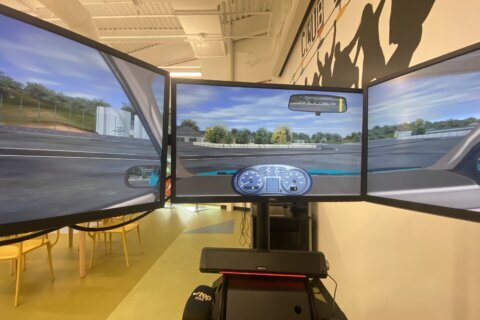As of Tuesday, the total number of Marylanders who had been vaccinated for coronavirus stood at 76,916 — about 1.27% of the state’s population.
And as the state struggles to ramp up its efforts in what Gov. Larry Hogan called “the greatest peacetime undertaking in American history,” Maryland announced some changes to how the vaccines will be administered — and who will get them.
The state’s National Guard will begin dispatching emergency teams Wednesday to help local health departments administer shots and to advise them on logistical issues.
The state will also give local health departments information on the 700 volunteers “who are ready and willing to assist with administering vaccines” through the Maryland Responds Medical Reserve Corps.
Maryland remains in Phase 1A of its vaccination program. And during Tuesday night’s briefing, Hogan announced that it is expanding to include an additional half-million people — including “all licensed, registered and certified healthcare providers” in the state.
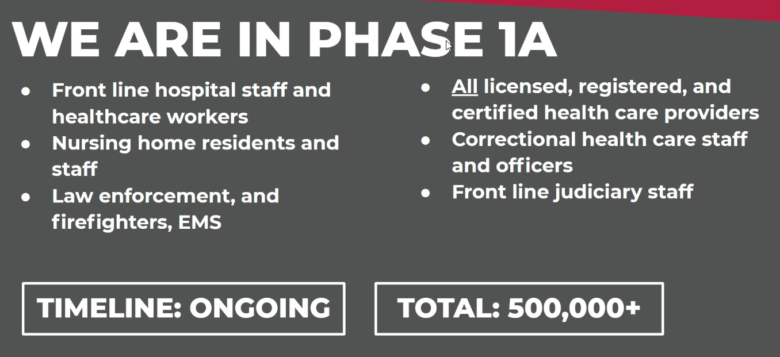
Phase 1B is expanding to include 860,000 more residents — most notably, educators. (Montgomery County’s Board of Education urged such a move in a letter on Tuesday.) This phase is expected to begin later this month — given the current rate of vaccine doses being received from the federal government (about 72,000 a week).
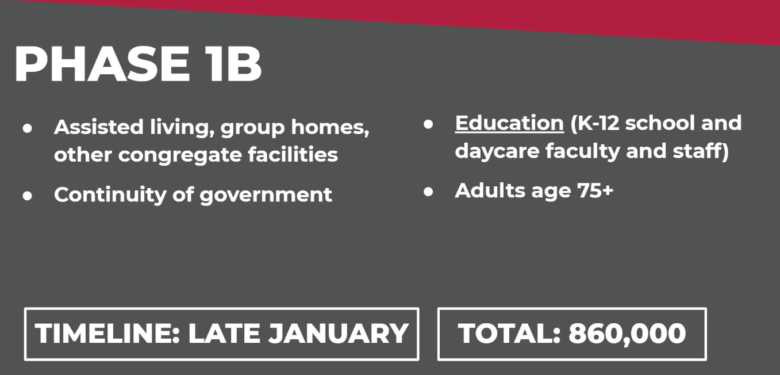
And the expanded Phase 1C — estimated to begin in early March — will include Marylanders 65 to 74, as well as some essential workers. About 772,000 more Marylanders will be vaccinated under Phase 1C.
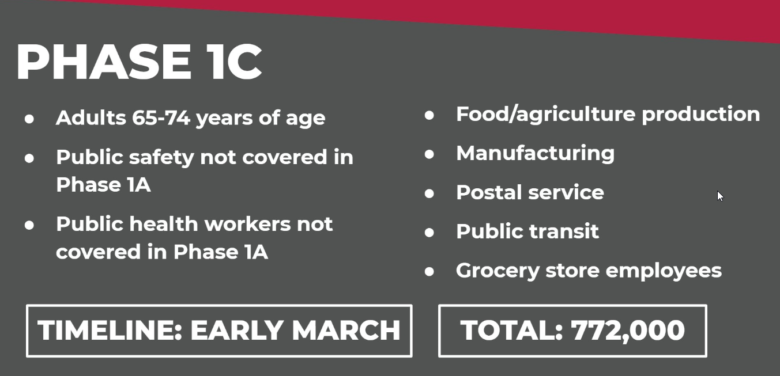
An additional 1.1 million can be vaccinated under Phase 2, which will now include 16- to 64-year-olds with health issues as well as prisoners, who have been particularly vulnerable to the virus due to cramped conditions.
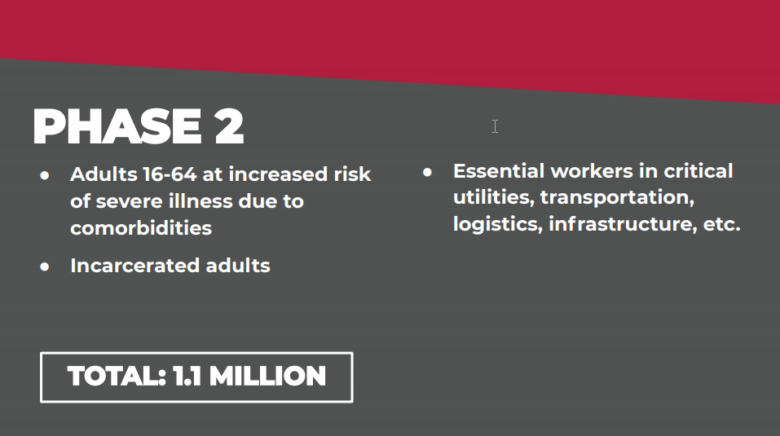
The rest of the general public will be covered in Phase 3.
Hogan also announced that vaccinations will now adapt a “rolling distribution” model, similar to airline seating: The state will not wait to get an entire priority group vaccinated before moving on to subsequent phases, but members of earlier groups can still get vaccinated when the state moves on.
To keep doses from going unused, Hogan said the state could allocate fewer doses to facilities that haven’t administered at least 75% of their initial allocation.
“We can’t just leave them sitting in freezers at the hospital,” Hogan said. “If they’re not going to use them, we’re going to send them somewhere else.”
And to ensure the state has updated data on vaccinations, Hogan also issued an order requiring all providers to report data to its immunization-data system within 24 hours of vaccines being given.
Maryland marked another 1,956 recorded coronavirus cases in the last 24 hours, with 55 more deaths. There were also 20 more hospitalizations — increasing the total of current patients to 1,771. The state’s testing-positivity rate has also increased to nearly 9.2% — a rate not seen since early last summer.
“We’re still in the thick of this fight,” Hogan said.
As for the delays themselves, the governor detailed the drawn-out process involved in getting shots into Marylanders’ arms. In addition to the time it takes for doses to be delivered to providers (up to nine days), it can take up to two additional weeks for training, quality assurance and logistical concerns.
“While none of us are thrilled with the pace of this rollout over the first couple of weeks, I can assure you that it is improving every day,” Hogan said.
- Sign up for WTOP alerts
- Latest coronavirus test results in DC, Maryland and Virginia
- Coronavirus vaccine FAQ: What you need to know
- Charles County hospital faces staffing challenges amid pandemic
- Coronavirus vaccine rollout continues to lag in Maryland and Virginia
- Fauci: US could soon give 1 million vaccinations a day
Looking for more information? D.C., Maryland and Virginia are each releasing more data every day. Visit their official sites here: Virginia | Maryland | D.C.


